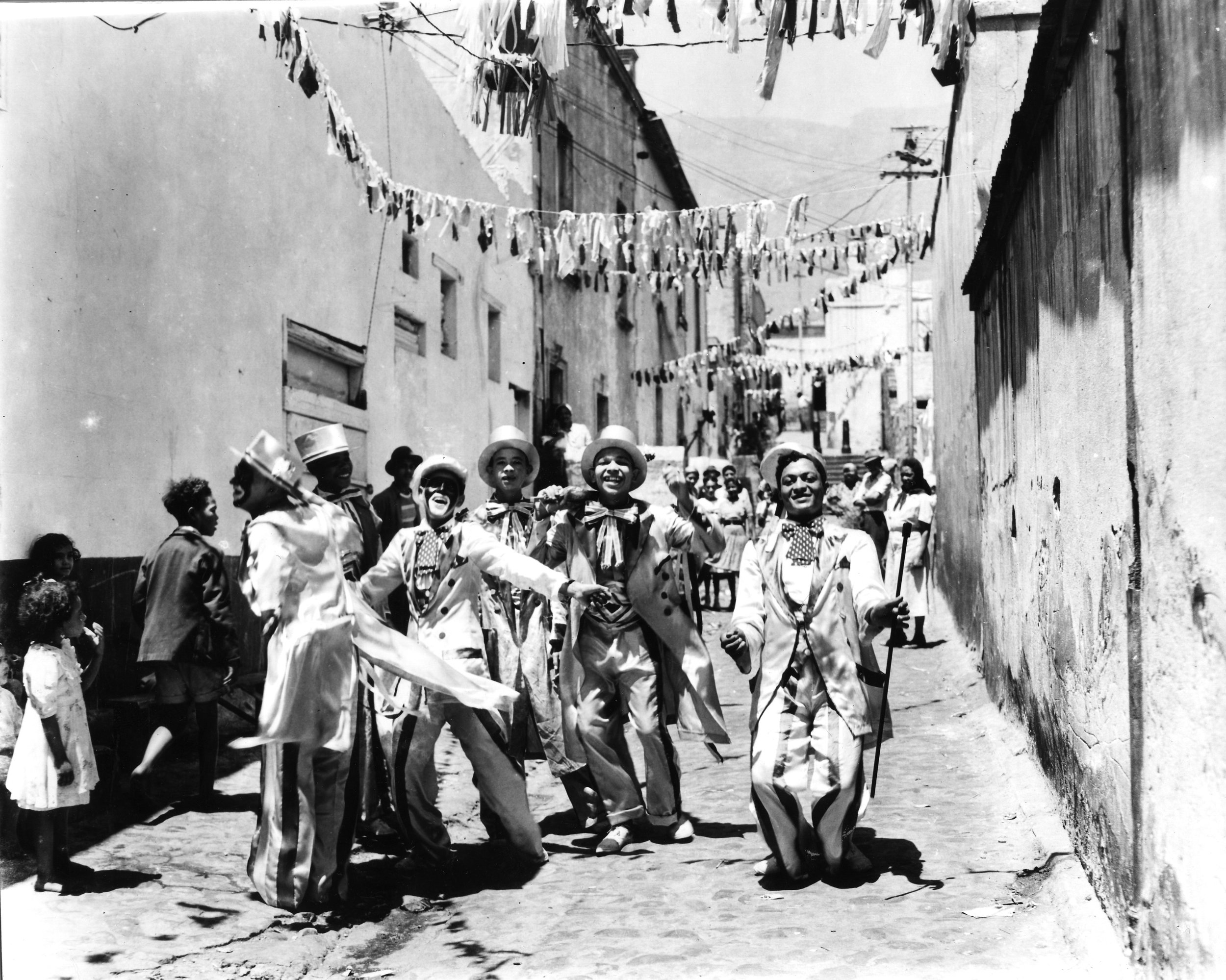The Songs and Choirs
Procession on the occasion of the slave liberation, Cape Town showing drums and trumpets, 1854. Painting by George Duff (active 1846-1864). Image from the MuseumAfrica Collection (71/534).
Goemaliedjies were originally dancing songs accompanied by a drum. They were typically sung by the enslaved at picnics and on Tweede Nuwejaar, the second day of the new year, a holiday for the colony’s enslaved population. Mostly sung in Afrikaans, the goemaliedjies made fun of people, sometimes those in authority, and could be seen as a form of protest music. The origins of these goemaliedjies are obscure, but it’s safe to say they are a blend of Dutch and Indonesian folk songs, combining the humour and styles of both traditions.
Die Angeliere Singing Choir. Performance at the Afrikaans Taal Monument, 2024. Photograph by Heidi Erdmann.
Moppies are fast-paced call-and-response songs with satirical lyrics that describe or refer to topical events aimed at making audiences laugh because of the lyrics and the antics of the soloist. These days they are composed by assembling snatches of melodies ‘borrowed’ from local and international pop songs and superimposed on the goema beat.
A Malay Choir performs at a competition in the Good Hope Centre, Cape Town, 2001. Photograph by Henry M. Trotter via Wikimedia Commons, released into public domain.
Nederlandslieder, originally Dutch songs, are the products of blending and mixing of elements from Europe, various Islamic regions and the United States. These songs are characterised by the alternation of the soloist who sings melodies ornamented with karienkels (vocal flourishes not unlike a yodel) and a choir which sings tonal harmony chords. In total, there are only a few hundred such songs, all of which are preserved via oral transmission.
Nederlandslieder and moppies are both associated with the Cape Muslim (or Cape Malay) community, and sung by large, mainly by male choirs, sometimes with instrumental accompaniment.
Cape Minstrel clubs gathering at Newlands Stadium, 1964. Image (slightly cropped) from the Western Cape Archives and Records Service (E 259).
The Kaapse Klopse are the troupes who participate in the street processions during the Carnival historically held on 2 January. The word Klopse, from the English ‘clubs’, described the sports and social clubs and the mutual societies of the creole communities who took to the streets to celebrate the New Year. These clubs often had singing groups. To distinguish between the different clubs, they wore different coloured costumes and each group would sing their own repertoire of songs.
Minstrels in Cape Town. From Wikimedia Commons; licenced under CC BY 2.0
The Klopse were influenced by the Minstrels' use of costumes and make-up, and the brass marching bands, who introduced instruments that could comfortably be carried, like drums, banjos and tambourines. Brass instruments were added later. As a form of protest, the Klopse sported whiteface instead of the Minstrel’s blackface.
Click here to view a short video of one group of Kaapse Klopse.
Krismiskore (Christmas choirs) are in fact brass bands that are called choirs because they were originally vocal groups. They open the Carnival season by taking to the streets on Christmas Eve. Bound to specific congregations, the choirs sing carols, hymns and marching songs, but do not march like the Klopse. They are distinguished from each other by their distinctive costumes.
Photograph by Ray Ryan, 1957. From the E. van Z. Hofmeyr & J. Lückhoff Collection (BK40), Iziko Social History Collections.
Nagtroepe (night choirs) are the Cape Malay choirs who perform on New Year’s Eve, singing and marching through the streets of the city. On Tweede Nuwejaar, the day after New Year’s Day, they may also join various Klopse troupes. They sing moppies and are sometimes accompanied by brass or string bands.







